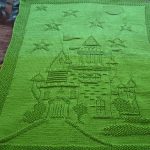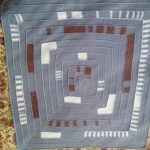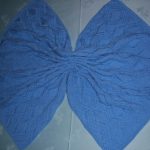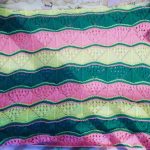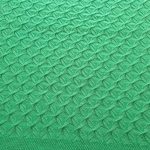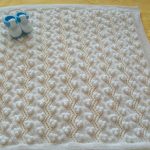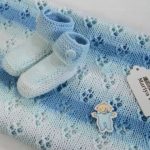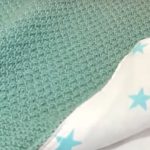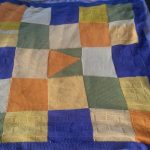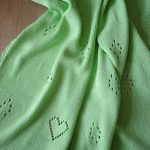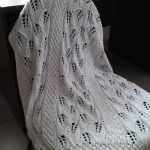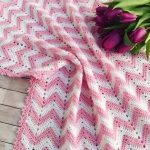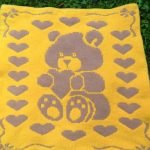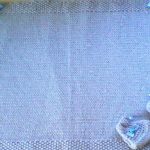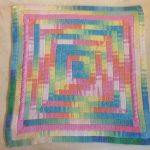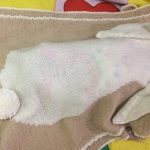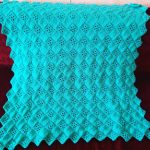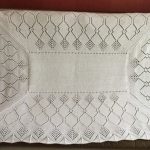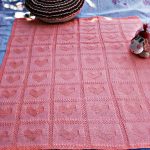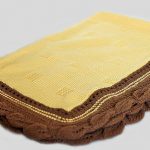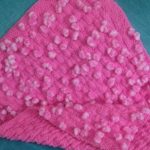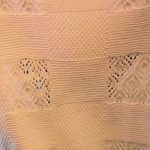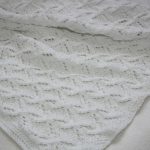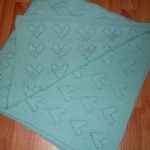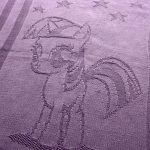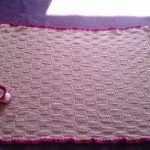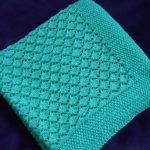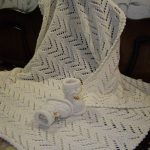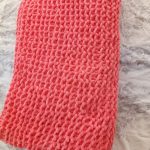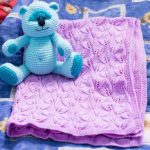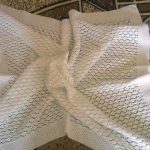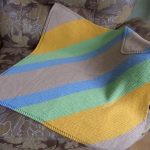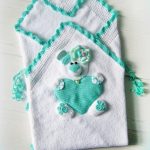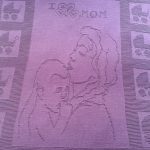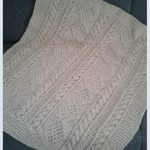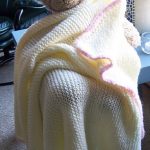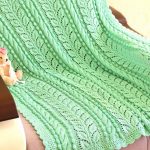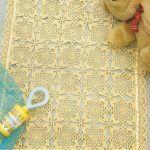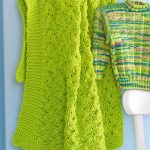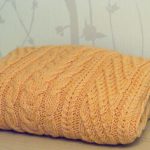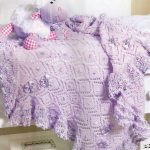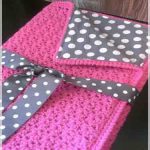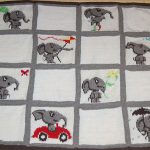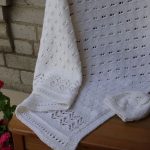 How to whiten bedding at home: the rules for removing stains
How to whiten bedding at home: the rules for removing stains
Knit children's blanket knitting
The children's blanket is a useful, universal thing: you can take it for a walk with the baby for warmth or put it inside the stroller. And when it is made with your own hands, it becomes literally irreplaceable.
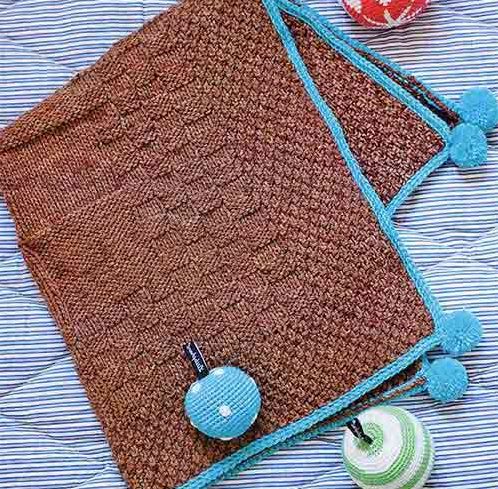
Baby blanket will fit in a stroller or crib and warm your baby
Such things are often made with a hook, but it is much more convenient to knit because of the size of the work, and, if desired, the presence of patterns.
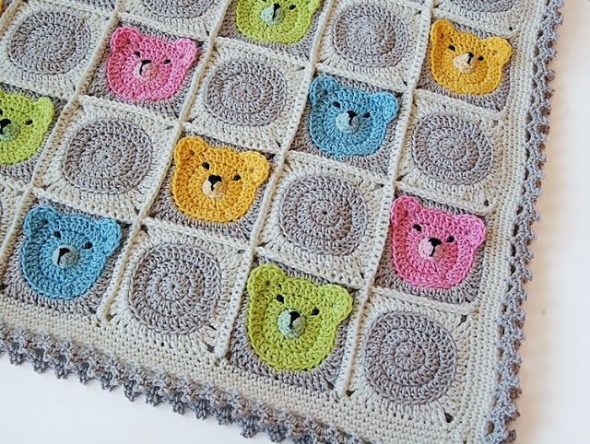
Crocheted crocheted baby blanket
Content
- 1 How to choose knitting needles?
- 2 Children's plaid knitting needles for newborns
- 3 Multicolored plaid
- 4 Openwork plaid knitting needles
- 5 Plaid with embossed patterns
- 6 Plaid with braids
- 7 Plaid with a sailboat
- 8 Video: Children's plaid knitting needles | Detailed lesson
- 9 50 ideas for inspiration and creating a children's blanket with your own hands:
How to choose knitting needles?
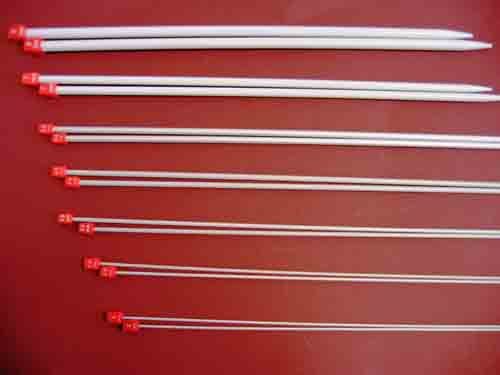
Long knitting needles of different thickness are suitable for different yarns and different ornaments.
The most suitable needles for a newborn are relatively long knitting needles - more than 80 cm, the thickness should be chosen according to the yarn used - from number 3 to number 6.
The knitting techniques for knitting children's blankets are vast, so the choice depends only on your taste and visual preferences.
Let us analyze the most common simple way, it is perfect for beginners in this business.
Children's plaid knitting needles for newborns
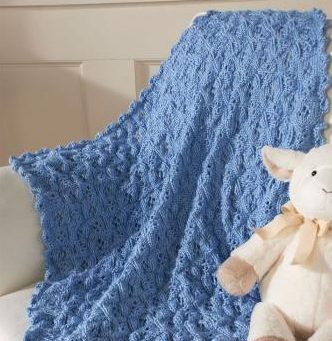
Beautiful pattern for a children's plaid that will suit a boy and a girl
Such a product is the most suitable option for babies: not too heavy, but retains heat well, and if the yarn is chosen correctly, the blanket will be very pleasant to the child's body.

Pink children's blanket made according to the same pattern looks tender and beautiful.
For the blanket, designed for the smallest, suitable for 100% acrylic yarn. Spokes - circular, about 5 mm in diameter, about 90 cm long.
Also in the process of knitting it definitely need to use the scheme - it is many times more compact and more convenient, and the knitting itself is not easy.
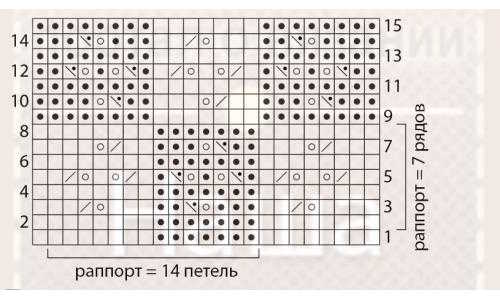
Scheme of the report for a children's blanket with his own hands
Rapport will consist of 7 rows and 14 loops. First you need to dial 121 stitches, then knit one face with two stitches of the left knitting needle with the right needle.
Next, we consider the progress of work in accordance with the scheme for the rows
- 8 facial, 7 purl, 7 facial. Repeat 8 times + 1 facial.
- The same, but the last one is wrong.
- 4 facial, nakid, 2 together to the right, 2 facial, the same is repeated 8 times + 1 facial.
- Same as the second.
- 2 facial, 2 together to the right, nakid, 1 facial, again nakid, 2 together to the right, 1 facial. To quit 8 times + 1 face.
- Again completely repeat the second.
- 3 facial, 2 together right, nakid, 3 facial. The same is repeated 8 times + 1 facial.
- Again the second row.
After that, the whole cycle is repeated 18 times, and the last row completely copies the first one.
Such a detailed description of the work was given to understand the essence of knitting, only the scheme will be attached to the following methods.
For lovers of something brighter, a combined multicolored plaid of squares will do fine. It fit is nowhere easier, and it looks very unusual.
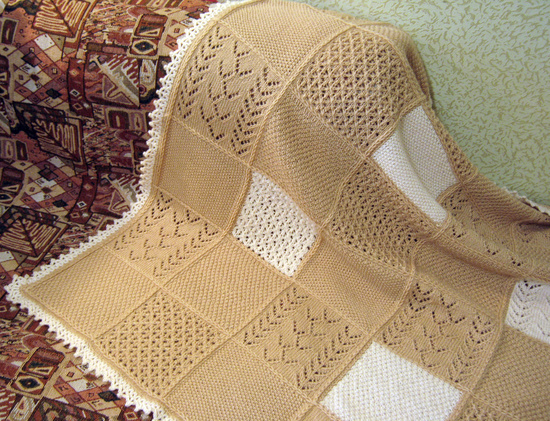
Stylish two-color plaid knitting needles from individual squares for the baby
Multicolored plaid
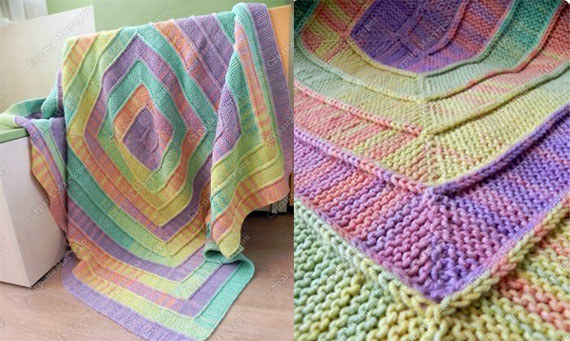
Multicolored plaid, knitted by the method of spiral knitting
You will need long knitting needles, as well as yarn of three or four colors.If the product knits for a child, usually not more than twenty squares are knitted, each of which is about 17 cm in size.
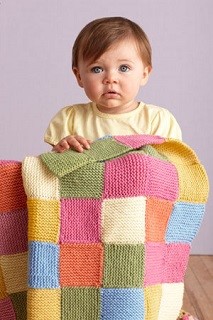
A chic multicolored plaid with knitting needles will even knit a simple knitter with a simple pattern.
The whole essence of mating is the alternation of facial and purl loops. For especially overall work usually 3-4 loops alternate.
Openwork plaid knitting needles
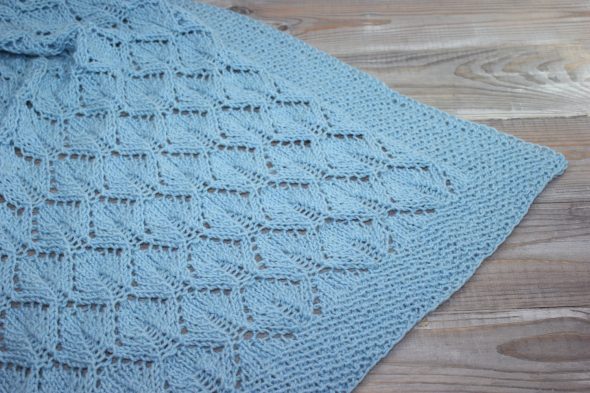
Openwork blue blanket for a newborn
The product of this type is perfect for home because of its lightness, airiness, and the baby will definitely appreciate the beautiful patterns.
Choosing yarn, stop on acrylic, knitting needles should take the same as in the previous version. The finished blanket will turn out to be almost a meter by a meter - this is its undoubted plus.
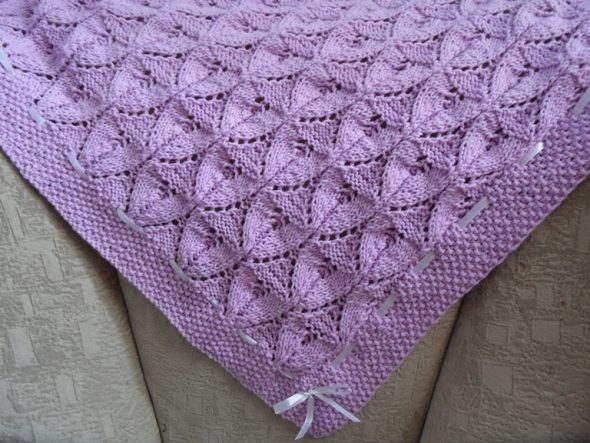
Openwork light blanket for baby in a delicate lilac color
It will also need a scheme: without it, it will not be possible to recreate elegant patterns.
At the beginning, you need to collect 156 loops, after which you knit the first 7 rows in the technique of “putanka”, that is, alternating the face loops with the purl.
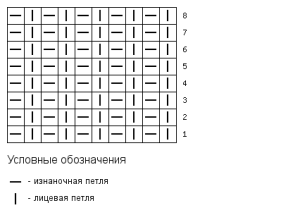
The scheme, on the basis of which the pattern "putanka" knits
It is important to perform the eighth row in the following way: knit only the first and last 6 loops of the row with the “muddle”, and the remaining 144 loops with the wrong side. From the next row between the “sixes” - 1 front + 13 rapports of the second row according to the above scheme.
The main part of the knit, enveloping the rows described in the scheme, six loops “putanki” on each side. Rapport repeat 20 times, and at the end to make 7 rows, alternating loops in a checkerboard pattern.
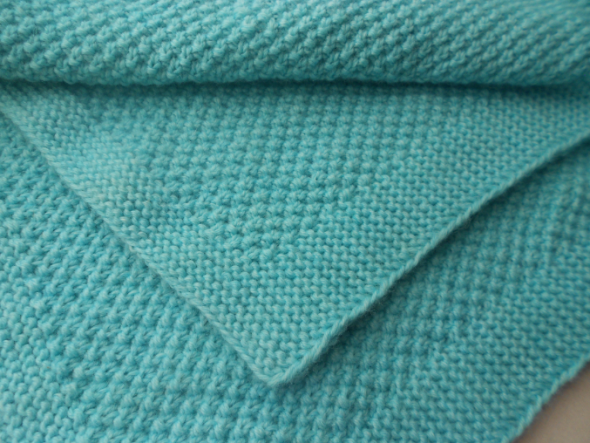
Beautiful children's plaedik with a pattern “putanka”
For more experienced craftsmen, sophisticated knitting techniques are quite suitable, for example, embossed patterns or braid weaving.
Plaid with embossed patterns
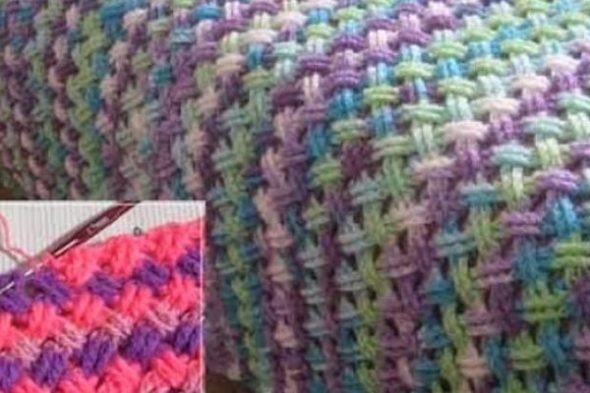
Beautiful plaid with an unusual relief pattern
Such a thing will perfectly fit into walks in cold days: the product will come out volumetric, dense, which means it will perfectly keep the child warm.
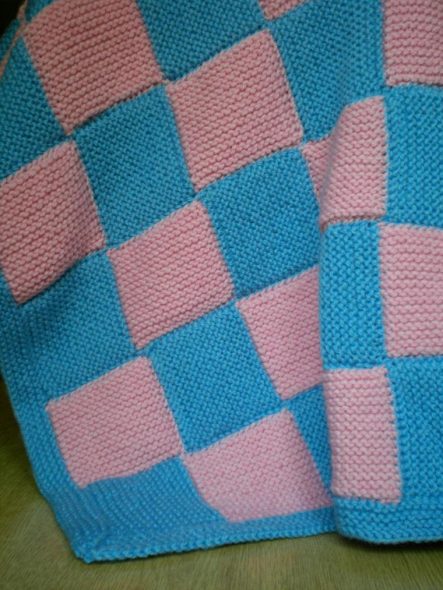
Children's plaid "Shakhmatka", knitted garter stitch
Tie it does not deliver much difficulty. Woolen threads are suitable - one of the warmest materials. The essence of manufacture is a “garter stitch”. Rapport - just two rows.
- The entire first row - the usual semi-column without nakida.
- The second one is symmetrical: a single crochet column, 4 air, a cone (five loops), 4 air again, and again a single crochet column.
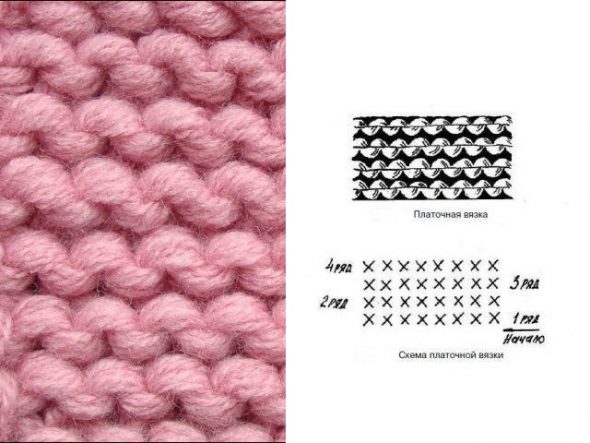
The scheme of classical garter knitting
Rapport repeat as many times as you see fit. The ideal blanket will be about the size of a meter x and a half.
One of the most difficult knitting elements is undoubtedly braids. Consider an example of their organic introduction to the children's blanket.
Plaid with braids
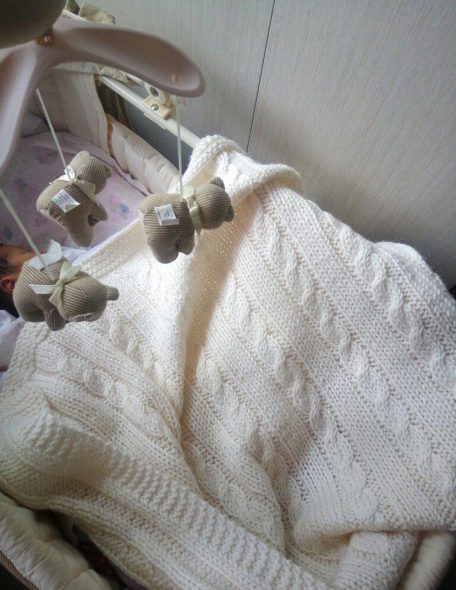
Snow-white children's plaid with braids
He, in fact, is a square rug on circular knitting needles. The finished blanket will be very large: a square with a side of one and a half meters. To make it, we take an acrylic thread with long circular knitting needles (80 cm), as well as a good sample or knitting scheme. She will need to properly place on the area of the product braids.
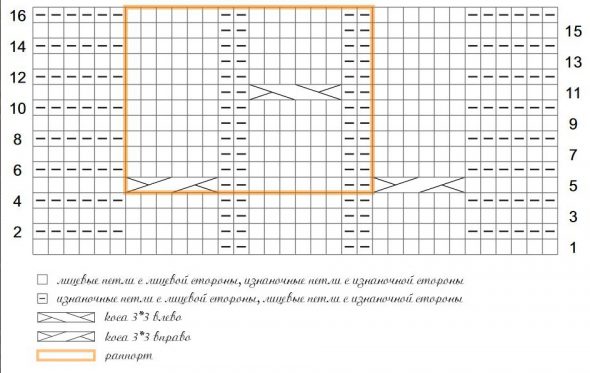
Scheme knitting knitting needles with a pattern "Braids"
The first step is to type on the spokes 98 loops folded in two threads, then just follow the scheme. Here it is necessary only to explain in more detail how the braids are created.
Knitting braid
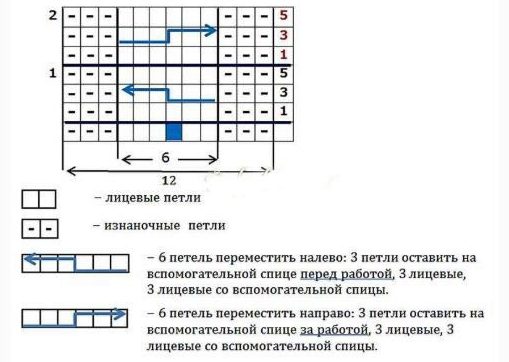
Scheme knitting pattern braids 3 * 3
Consider the case of this scheme: spit three x three. Remove the first three loops on the additional third knitting needle, in case the braid should go to the right, leave the third knitting needle behind the product (if the braid is directed to the left - before the product), then knit 3 loops with the left and 3 with the additional knitting needle. Spit is ready!
Finish knitting, repeating rapport several times, reaching the desired length. The last row must necessarily be 9 or 15, in accordance with the scheme.
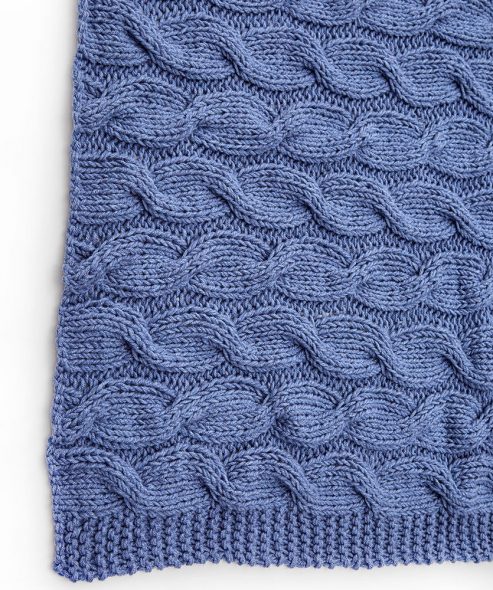
Plaid blue with braids in the left and right side
Particularly pleased with the baby blanket with the original pattern. A great idea would be to depict the pattern of the "ship-sailing". It looks spectacular and certainly not corny.
Plaid with a sailboat

Beautiful children's blanket with anchor and sailboat for the future sailor
The diagram of the figure includes 4 parts, each of which represents a specific part of the image.
Dial 124 loops. To make the edging, knit the first and last 7 rows with a “rice” pattern, decorate the first with the last 7 loops of each row.
The pattern of the “rice” pattern is not complicated at all. It can be found in almost all resources.
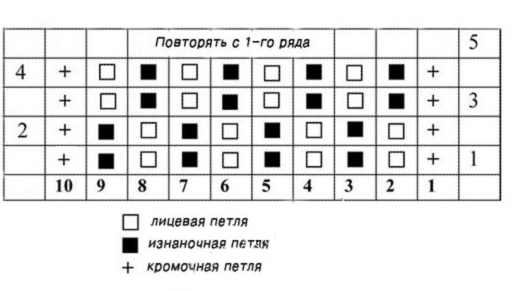
Knitting pattern “Rice”
This article presented the most common ways to knit a baby blanket with your own hands.
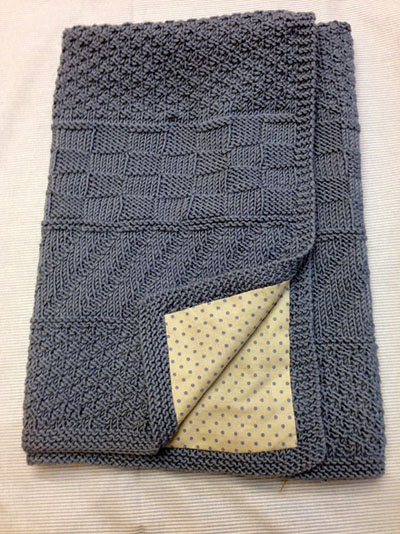
Children's blanket can be made on the lining to avoid irritation from warm wool options
A blanket created with a soul will warm your child or grandchild for many years, because handicraft will never become obsolete or go out of fashion.
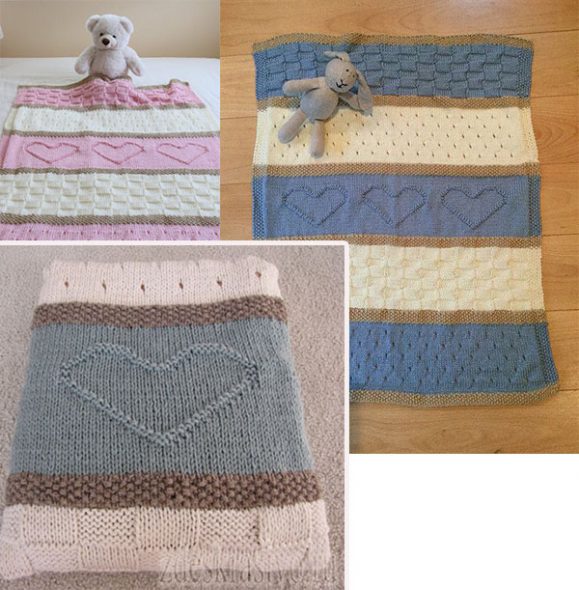
A set of children's blankets for any occasion
Video: Children's plaid knitting needles | Detailed lesson
50 ideas for inspiration and creating a children's blanket with your own hands:
 How to whiten bedding at home: the rules for removing stains
How to whiten bedding at home: the rules for removing stains
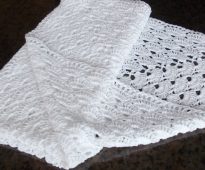 Yarn for baby blanket: tips on choosing
Yarn for baby blanket: tips on choosing
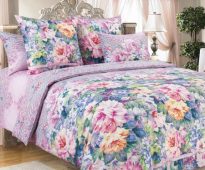 Choosing bedding density: everything about calico
Choosing bedding density: everything about calico
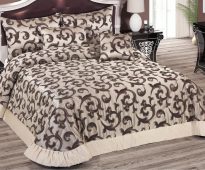 Tips for choosing fabric for bedspreads
Tips for choosing fabric for bedspreads
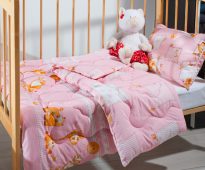 Baby blanket size
Baby blanket size
